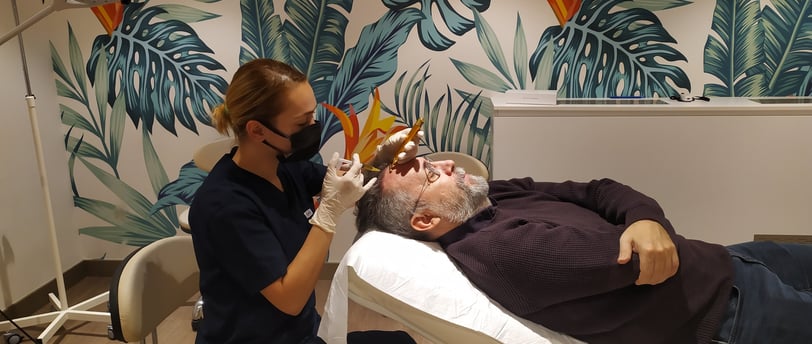Hair Transplant: Duration, Recovery, and Longevity
Considering a hair transplant is a big decision, and it's natural to have questions about the procedure, including how long it takes, how much time is needed for recovery, and how long the results will last.
12/11/20233 min read


Introduction
Considering a hair transplant is a big decision, and it's natural to have questions about the procedure, including how long it takes, how much time is needed for recovery, and how long the results will last. In this article, we will address these common concerns to help you make an informed decision about hair transplantation.
Duration of Hair Transplant Operation
The duration of a hair transplant operation can vary depending on several factors, including the extent of hair loss, the technique used, and the number of grafts required. On average, a hair transplant procedure can take anywhere from 4 to 8 hours.
The first step of the procedure involves the extraction of hair follicles from the donor area, which is usually the back or sides of the head. This process, known as follicular unit extraction (FUE) or follicular unit transplantation (FUT), can take several hours, depending on the number of grafts needed.
Once the donor hair follicles are extracted, they are carefully transplanted into the recipient area, which is the area experiencing hair loss. The transplantation process requires precision and attention to detail, and it can take a few hours to complete.
It's important to note that the duration of the procedure may vary from person to person. Some individuals may require multiple sessions to achieve their desired results, which can extend the overall duration of the hair transplant process.
Recovery Time after Hair Transplant
The recovery time after a hair transplant procedure can vary depending on the individual and the technique used. In general, most people can expect to resume their normal activities within a few days to a week after the procedure.
Immediately after the surgery, you may experience some swelling, redness, and mild discomfort in the transplanted area. These side effects are temporary and typically subside within a few days. Your surgeon may prescribe pain medication or recommend over-the-counter pain relievers to manage any discomfort during the initial recovery period.
It's important to follow your surgeon's post-operative instructions carefully to ensure proper healing and minimize the risk of complications. These instructions may include avoiding strenuous activities, protecting the transplanted area from direct sunlight, and using specialized shampoos or medications to promote healing.
The transplanted hair follicles will undergo a shedding phase within the first few weeks after the procedure. This is a normal part of the hair growth cycle, and new hair will start to grow from the transplanted follicles within a few months.
While the initial recovery period is relatively short, it's essential to note that the full results of a hair transplant can take several months to a year to become fully visible. Patience is key during this period, as the transplanted hair gradually grows and blends in with your existing hair.
Longevity of Hair Transplants
The longevity of hair transplants varies from person to person. In general, the transplanted hair is permanent, as it is resistant to the hormone dihydrotestosterone (DHT) that causes hair loss in individuals with genetic predisposition.
However, it's important to note that hair transplants do not prevent future hair loss. While the transplanted hair is resistant to DHT, the existing hair surrounding the transplanted area may still be susceptible to hair loss. Therefore, it's crucial to follow a comprehensive hair maintenance plan, which may include medications, lifestyle changes, and regular follow-up with your hair transplant surgeon.
The success and longevity of a hair transplant also depend on various factors, such as the skill and experience of the surgeon, the quality of the donor hair, and the individual's overall health and lifestyle. By choosing a reputable surgeon and following their post-operative instructions, you can maximize the longevity of your hair transplant results.
Conclusion
A hair transplant procedure can be a life-changing solution for individuals experiencing hair loss. While the duration of the operation may vary, the recovery time is relatively short, and the results are long-lasting. By understanding the process, following post-operative instructions, and maintaining a healthy hair care routine, you can enjoy the benefits of a successful hair transplant for years to come.
